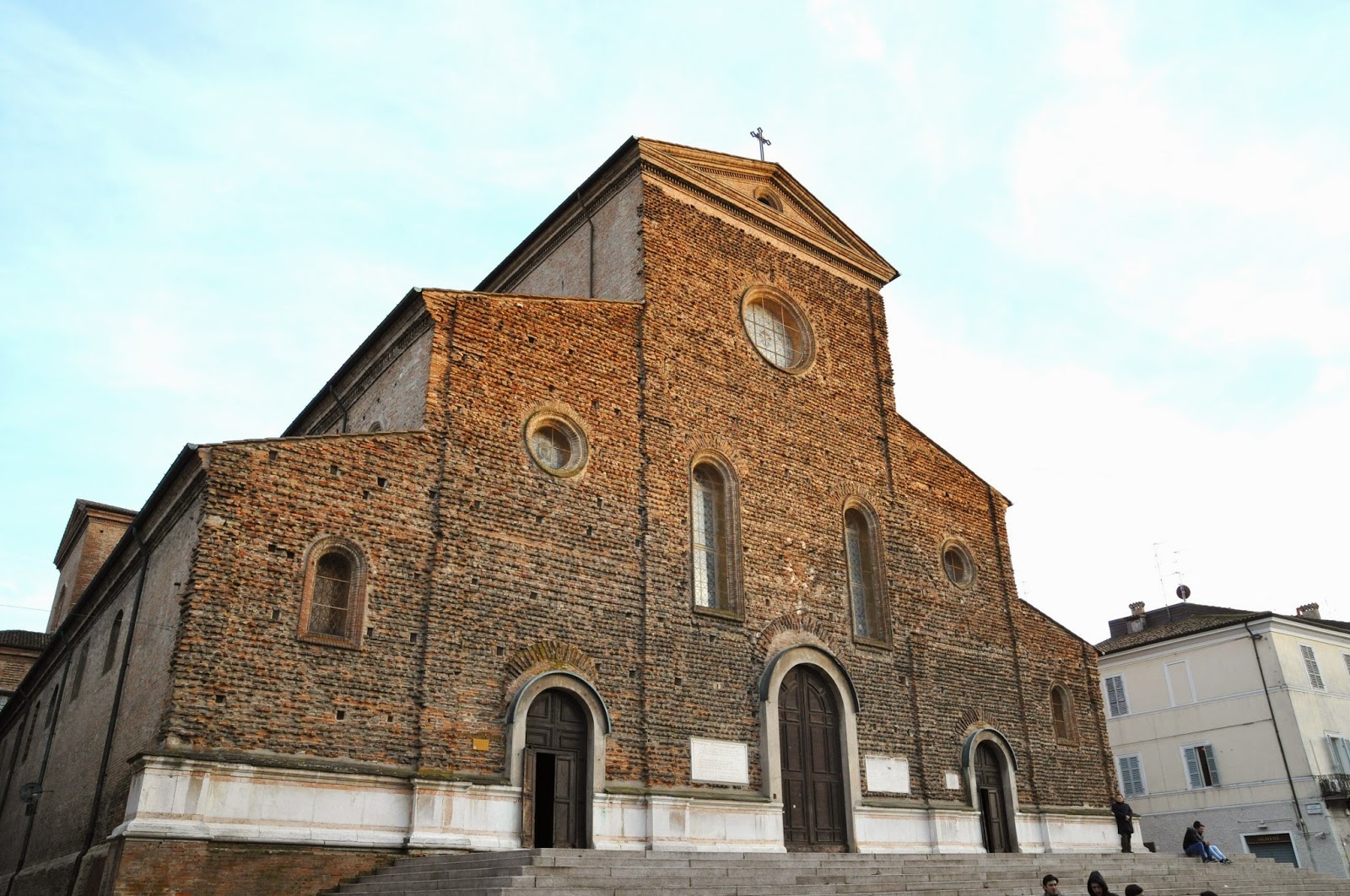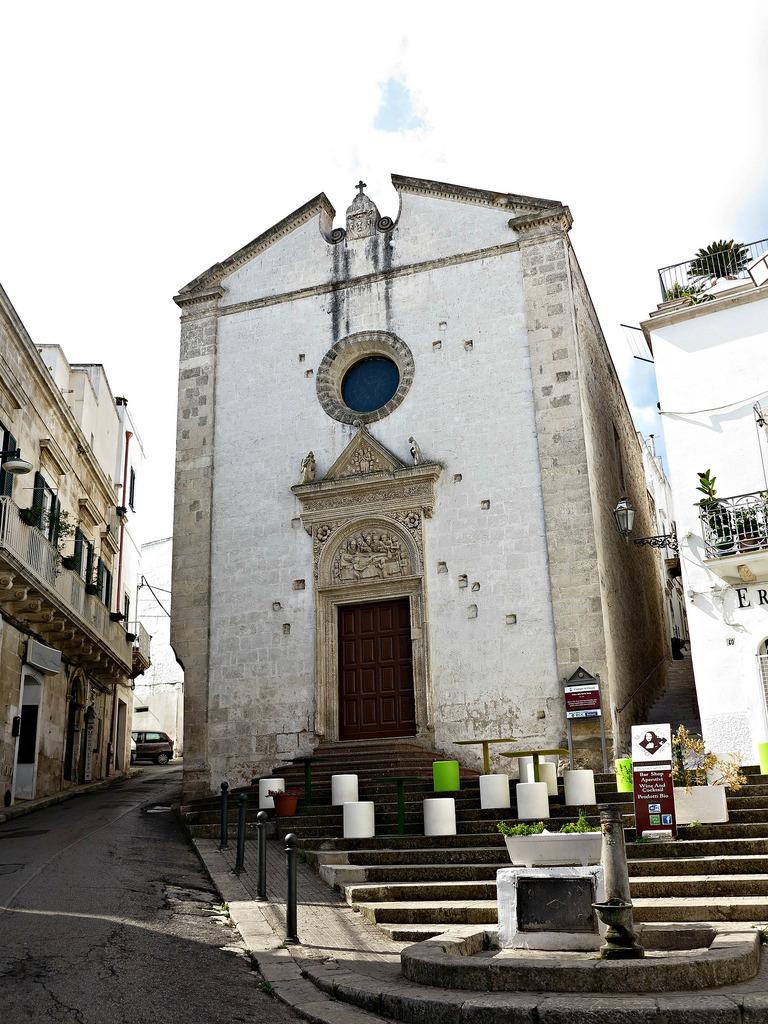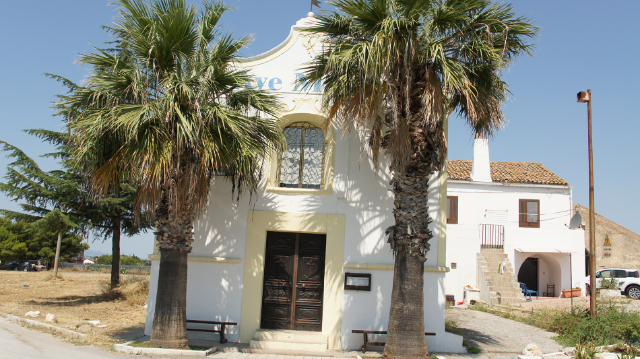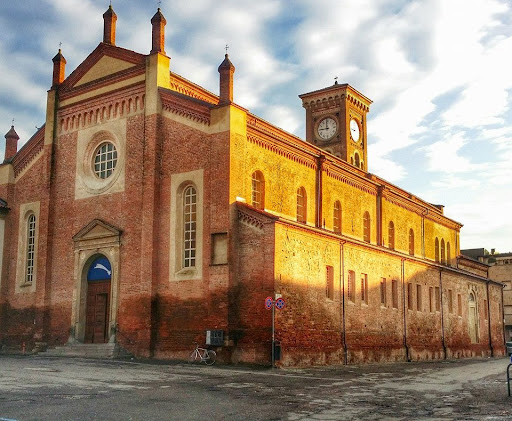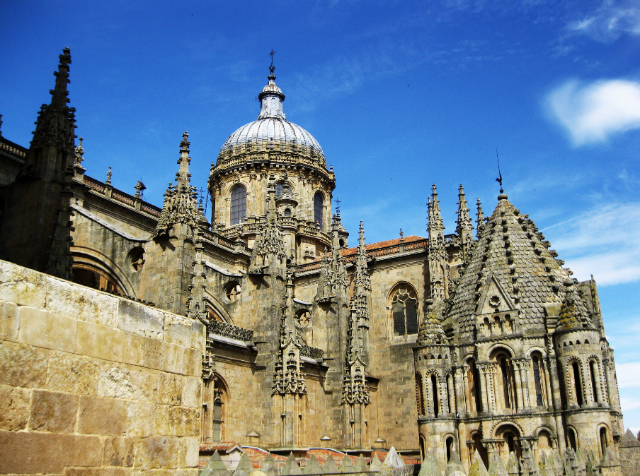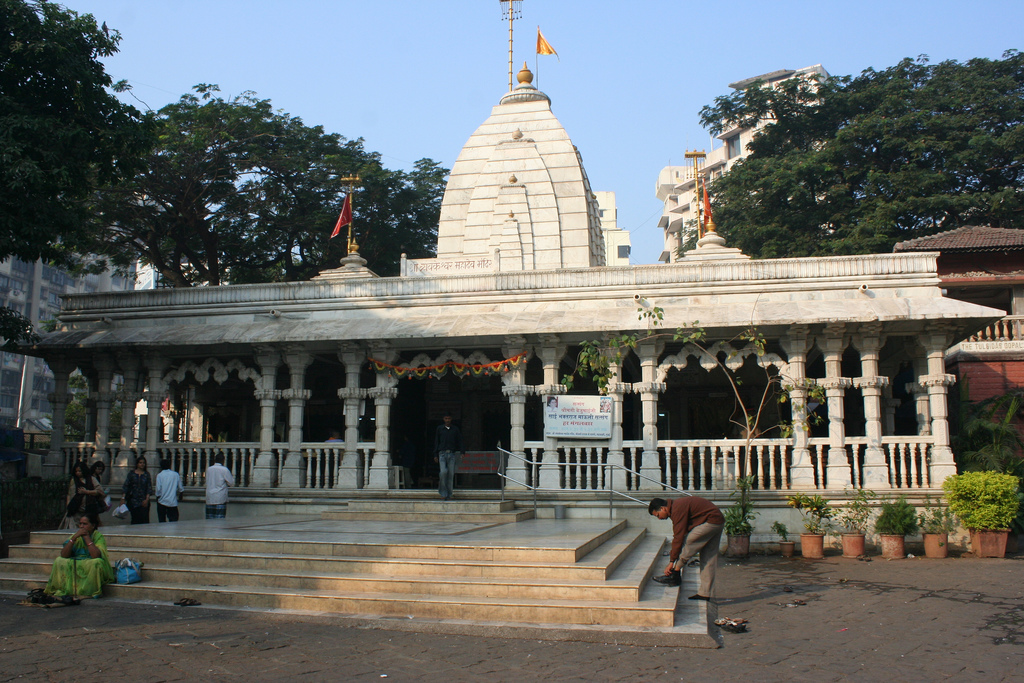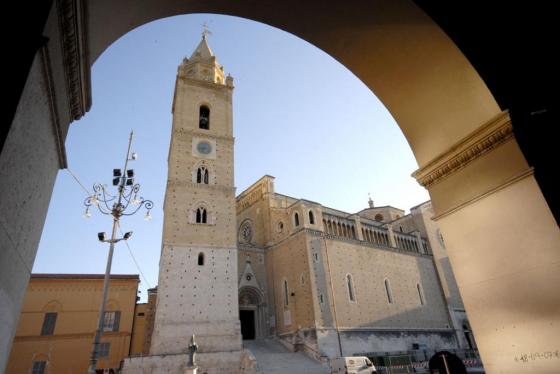The present cathedral, dedicated to St. Peter, was built between 1474 and 1520 on a pre-existing cathedral of which little is known and of which, in any case, nothing remains except reused stone elements in the outer sides. The building site for the construction of Faenza’s highest religious building was long, complex and tormented: the architect was the Florentine Giuliano da Maiano, a trusted architect of the Manfredi "sent" to Faenza by the Medici as part of the diplomatic and cultural relations that existed between the two seignories. Giuliano translated here Brunelleschian Renaissance models (see the most obvious reference that è the San Lorenzo in Florence) but reinterpreted them with "modi padani" to which local workers surely contributed-even beyond the architect’s intentions. The façade, in warm unfinished brickwork (toothed bricks) è unfinished and it is not known what the facing should have been: the one visible today, in white limestone limited to the basal band, was arbitrarily begun later, when Giuliano had already left the site. The initial maianeo project certainly also provided for more lighting than the current one, which was partially mortified by the occlusion of some of the side openings of the first order due to altars, altarpieces and artwork not planned by Julian.
Because of its importance (which in the context of the Renaissance è is unique at the regional level, with the only counterpart being the Malatesta Temple in Rimini) and its complexity, it is advisable to visit this monument with enough time available and with the help of a guidebook (at the limit even with the essential but useful one available at the counter in front of the entrance): all the side chapels contain works of art, sometimes of capital importance. In any case, do not overlook the three most important sculptural monuments, namely the arches of S. Savino, S. Emiliano and S.Terenzio, respectively by Benedetto da Maiano and anonymous Tuscan Renaissance masters, then the touching wooden crucifix carved at the end of the 15th century by an unknown Nordic sculptor, possibly German, and finally the Pala Bonaccorsi, an exquisite 16th-century panel painted by Innocenzo Francucci da Imola and still provided with its original gilded and carved frame. It is also recalled that St. Pier Damiano is buried in the cathedral è in the chapel of the same name on the left flank.
